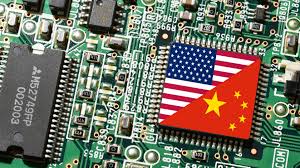President Donald Trump has announced plans to impose a 100% tariff on all Chinese imports effective November 1, 2025, marking one of the most aggressive trade measures in modern U.S. history. The decision has triggered volatility across global markets, raising fears of a full-scale U.S.-China trade war.
Trump cited intellectual property theft, unfair trade practices, and national security concerns as the primary motivations behind the move.
“China has long taken advantage of American businesses and workers. This measure ensures fair competition and protects U.S. industries from exploitation,” the president said in a statement.
Global Market Reactions
The announcement immediately rattled global markets. Major U.S. indices, including the Dow Jones Industrial Average and S&P 500, saw steep declines, while Asian and European exchanges also suffered losses.
Analysts warn that the tariffs could raise consumer prices, disrupt global supply chains, and slow economic growth in the coming months.
China’s Ministry of Commerce quickly condemned the decision as “unjustified,” warning that retaliatory tariffs on American goods were under consideration. Beijing’s potential countermeasures could target sectors like agriculture, technology, and automobiles.
Impact on Businesses and Supply Chains
The 100% tariff would affect a vast range of goods—from electronics and machinery to textiles and consumer products—placing significant pressure on U.S. retailers and manufacturers dependent on Chinese imports.
Economists say companies may be forced to relocate supply chains, absorb higher costs, or pass them to consumers, worsening inflationary pressures.
Global trade experts caution that this escalation could redraw international trade routes and accelerate economic decoupling between the U.S. and China.
Political and Economic Implications
The announcement arrives amid ongoing economic slowdowns in both nations and rising geopolitical tensions over technology, defense, and global influence.
Observers suggest that Trump’s tariff move could be strategically timed to influence domestic politics ahead of key elections.
However, economists warn that the measure could hurt American exporters and strain diplomatic relations with allied nations caught in the crossfire.
Looking Ahead
With the November 1 deadline approaching, global leaders, investors, and trade bodies are closely monitoring the situation. The World Trade Organization (WTO) has urged restraint, while multinational corporations are assessing potential operational disruptions.
The next steps from Beijing and Washington could determine whether this becomes a short-term standoff or the start of a long-term trade confrontation that reshapes the global economic order.

